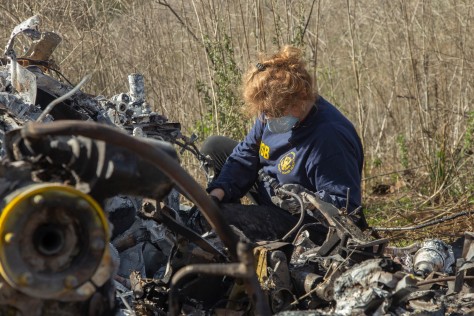By Dolline Hatchett, Director, NTSB Office of Safety Recommendations and Communications
COVID-19 has affected every American, and the NTSB has adapted to respond to the effects of the pandemic. As the agency’s Director of Safety Recommendations and Communications (SRC), I know how important it is to keep the industry, elected officials, and the advocacy community briefed on transportation safety; that’s why I decided to take advantage of this platform to try to reach as many of my fellow citizens as possible.
As we approach the July 4th weekend, with travelers expected to hit the roadways even in the midst of a pandemic, it’s important to remind the traveling public to drive safely. Motor vehicle crashes continue to constitute a chronic national health care crisis, resulting in 35,000 or more deaths and millions of injuries each year. Highway crashes create an enormous demand for medical services, year in and year out. At the same time, an emergent crisis, like COVID-19, demands those same resources, and they start to get stretched thin.
SRC works not only to inform, but also to advocate for safer personal transportation choices. Although much of the country has been shut down for the past few months, the agency continues to craft and track safety recommendations, and it’s up to my office to publicize safety advances when we close recommendations.
Throughout the lockdown, SRC has continued to facilitate communication with state and national policy makers, upon request, about transportation safety issues that are relevant to legislation they may be considering. The difference these days is that the office responds to these requests in writing, rather than in face-to-face testimony. We’ve also responded to requests from federal congressional staff to provide information on our recommendations to help them develop a surface transportation bill. And of course, we continue to make safety publications available to the public and to respond to queries about ongoing investigations.
But perhaps the most innovative response we’ve had during this pandemic is our Safety Reminder campaign, which launched just before Memorial Day with a public service announcement. This outreach was important; surprisingly, while most of the country was on lockdown leading up to Memorial Day weekend, a nationwide speeding trend emerged. We decided to proactively remind the public about safe transportation across all modes as the nation began to re-open.
I believe it’s important to re-emphasize safe road travel ahead of the July 4th weekend, especially because stay-at-home orders have eased throughout the country, and we may see even more road travelers this holiday weekend than we did over Memorial Day weekend. Despite being away from our physical offices, SRC continues to keep the public informed of the agency’s work as we advocate for safety improvements across all modes of transportation. We’re the conduit between the technical expertise at the agency and our stakeholders—the traveling public, lawmakers, and industry—and it’s up to us to effectively communicate the vital safety improvements that come out of our investigations, reports, and studies. There’s no better time to convey that important information than now, just before a holiday weekend during which many Americans will be taking to the roads, perhaps for the first time in months.
So, before the start of the holiday weekend, when you’re picking out your mask and planning socially distant celebrations, remember how your actions behind the wheel relate to this pandemic and those directly affected by it. Don’t drive impaired. Don’t drive distracted or fatigued. Don’t speed. Whether you’re a passenger or a driver, always wear your seatbelt.
Let’s work together to avoid further strain on our health care system; every ambulance not called, every unit of blood not transfused, every bed in an emergency department not filled because of a crash, is one more resource made available to fight our emergent crisis.



